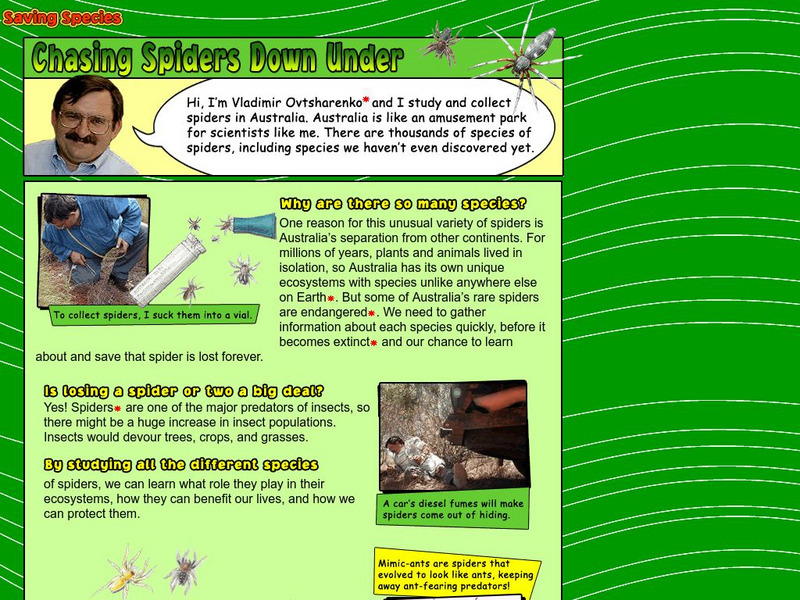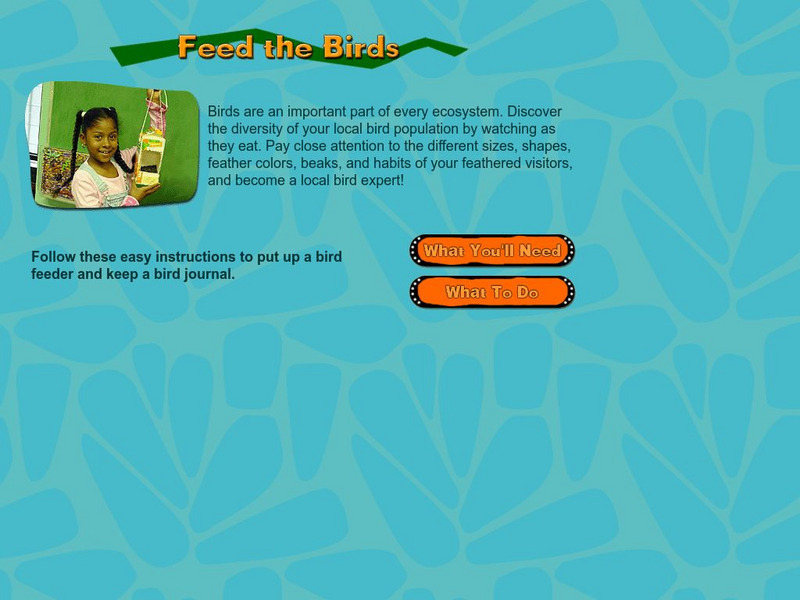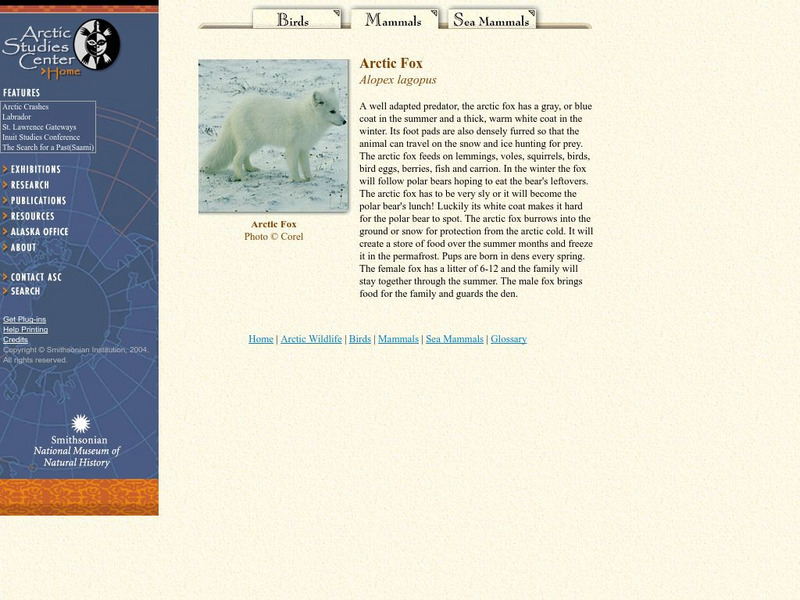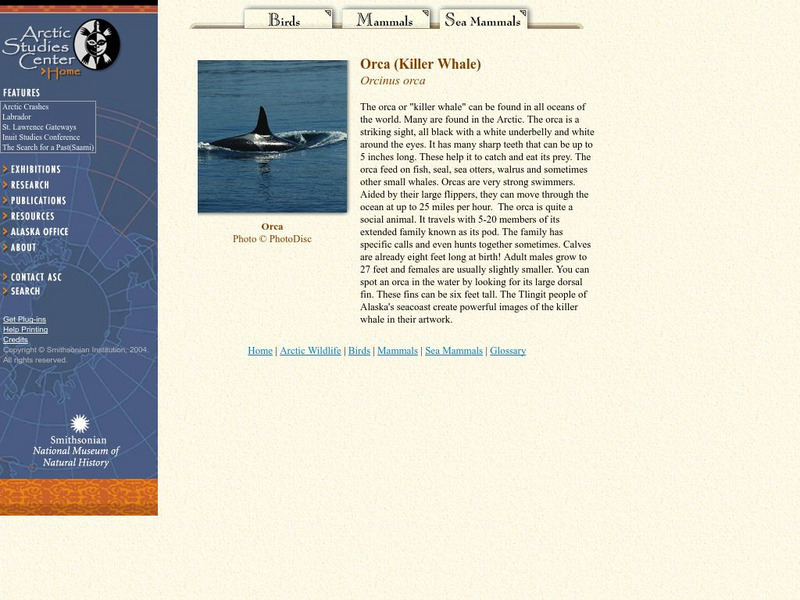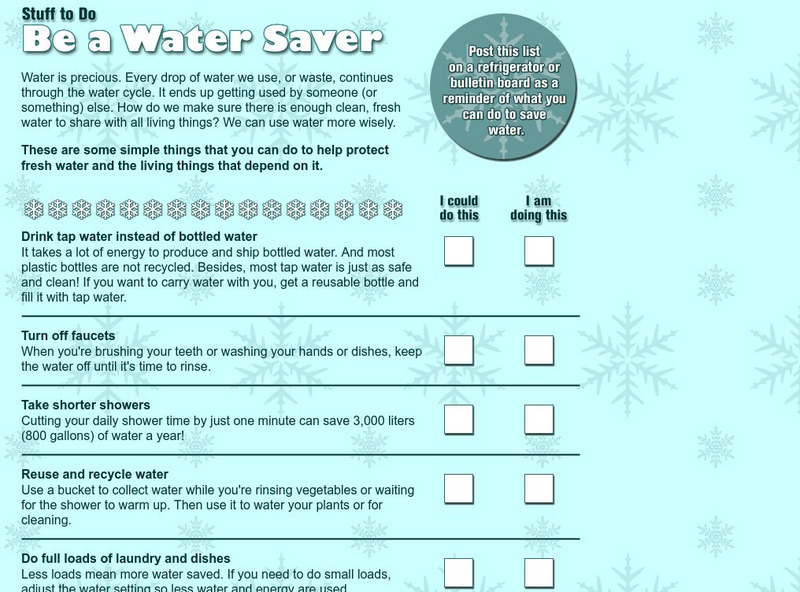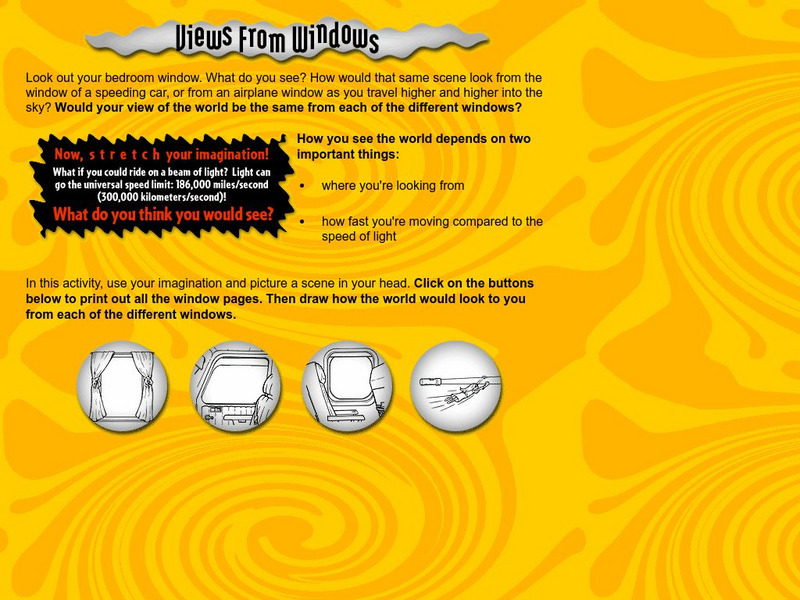American Museum of Natural History
American Museum of Natural History: O Logy: Chasing Spiders Down Under
Naturalist Vladimir Ovtsharenko explains why Australia is home to so many different species of spiders, why spiders are important, and why spiders should be protected.
American Museum of Natural History
American Museum of Natural History: O Logy: Stuff to Do: Feed the Birds
Instructions for building a bird feeder and for keeping a journal of observations about the birds that come to feed.
Smithsonian Institution
National Museum of Natural History: Zebra
Brief overview of the zebra and accompanying photos demonstrate the physical adaptations that allow this animal to survive in its habitat.
Smithsonian Institution
National Museum of Natural History: Our Way of Making Prayer
The native Yup'ik people of Alaska, like many other Native American tribes, once used decorative masks for ceremonial purposes. Here you can read a short introductory piece about the masks, view the masks, and watch several short video...
Smithsonian Institution
National Museum of Natural History: Where Do Mammals Live: Giraffe
Review basic facts about the giraffe and launch an interactive activity that demonstrates the length of its tongue, a physical adaptation that helps the giraffe survive in its environment.
Smithsonian Institution
National Museum of Natural History: North American Mammals
This concise site contains photos of North American mammals along with a map showing where they currently can be found. Includes links to other mammal sites.
Smithsonian Institution
National Museum of Natural History: Where Do Mammals Live?: Hyena
A brief illustrated overview of the hyena explains why this animal is such a successful dry-weather scavenger.
Smithsonian Institution
National Museum of Natural History: Where Do Mammals Live?: Wildebeest
Brief illustrated overview of the wildebeest and an accompanying video demonstrate the physical adaptations that allow this animal to eat and digest tough African grasses.
American Museum of Natural History
American Museum of Natural History: Ology: Endangered!
After making the gameboard, play this interactive learning game that teaches about "The Endangered Species Act", a law that protects animals and plants that are in danger of going extinct.
American Museum of Natural History
American Museum of Natural History: O Logy: Stuff to Do: Draw a Monarch Butterfly
Learn how to make a scientific illustration of a monarch butterfly in several easy steps.
Smithsonian Institution
National Museum of Natural History: Arctic Studies Center: Arctic Fox
This site takes a brief look at the Arctic Fox, focusing on this animal's adaptations to the harsh climate of its environment.
Smithsonian Institution
National Museum of Natural History: Arctic Studies Center: Killer Whales
This site provides a very brief overview of the orca or "killer whale."
American Museum of Natural History
American Museum of Natural History: O Logy: What Is the Greenhouse Effect?
An illustrated explanation of the greenhouse effect.
University of Florida
Florida Museum of Natural History: Paleobotany and Palynology Image Gallery
An interesting slide show of unique plant fossils, each picture has a caption.
American Museum of Natural History
American Museum of Natural History: O Logy: Stuff to Do: Be a Water Saver
A checklist of ways to cut back on your use of water.
American Museum of Natural History
American Museum of Natural History: O Logy: Stuff to Do: Be a Water Saver
A checklist of ways to cut back on your use of water.
American Museum of Natural History
American Museum of Natural History: O Logy: Bahamas: Creatures of the Reefs
Biologist Paula Mikkelsen, who studies mollusks among the coral reefs in the beautiful waters of the Bahamas, explains her work.
American Museum of Natural History
American Museum of Natural History: O Logy: Stuff to Do: Views From Windows
Instructions that take you through an Einstein-like thought experiment by having you imagine and record what you see when stationary and when moving at the speed of light.
American Museum of Natural History
American Museum of Natural History: O Logy: Stuff to Do: Wear a Chimp
Illustrated instructions for a constructing bracelet from a section of the DNA code for a chimp, a sunflower, a grizzly, the human heart, or any one of six other plants or animals.
Smithsonian Institution
National Museum of Natural History: Arctic Studies Center: Aleut
The Arctic Studies Center at the Smithsonian provides general notes on the Aleut people of Alaska. Includes a picture of a painting of an Aleut Hunter.
Smithsonian Institution
National Museum of Natural History: Where Do Mammals Live: Lion
Illustrated overview of the lion explains how the different roles of males and females help lions survive in their habitat.
Smithsonian Institution
National Museum of Natural History: Hall of Mammals: Snowshoe Hare
A brief overview of the snowshoe hare and accompanying photos demonstrate the physical adaptations that allow this animal to survive in its habitat.
Smithsonian Institution
National Museum of Natural History: Hall of Mammals: Bongo
Brief illustrated overview of the bongo that demonstrates the physical adaptations that allow this animal to live and move in its habitat.
Smithsonian Institution
National Museum of Natural History: Hall of Mammals: Bushbaby
Brief illustrated overview of the bushbaby and an accompanying video demonstrate the physical adaptations that allow this animal to communicate with family members.
